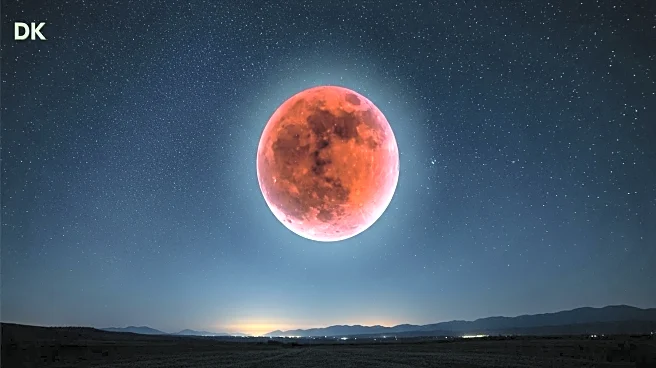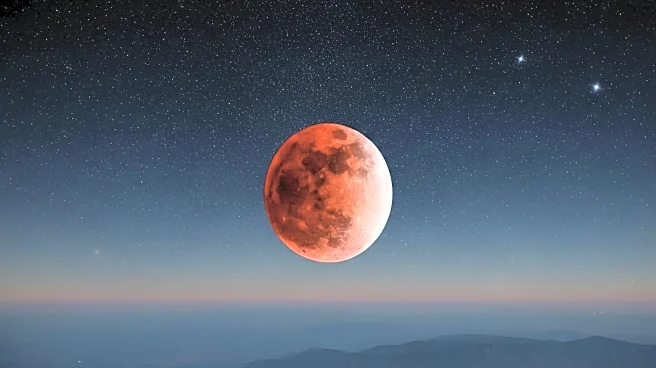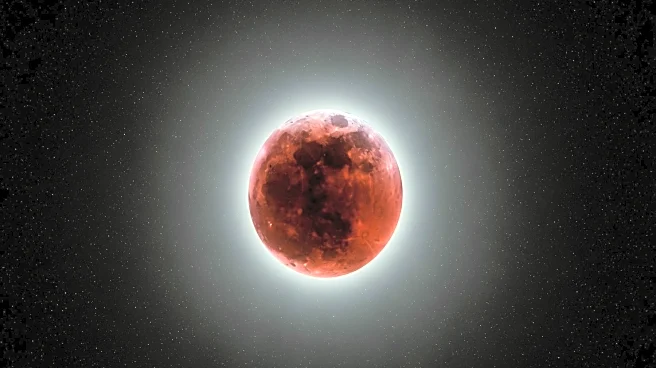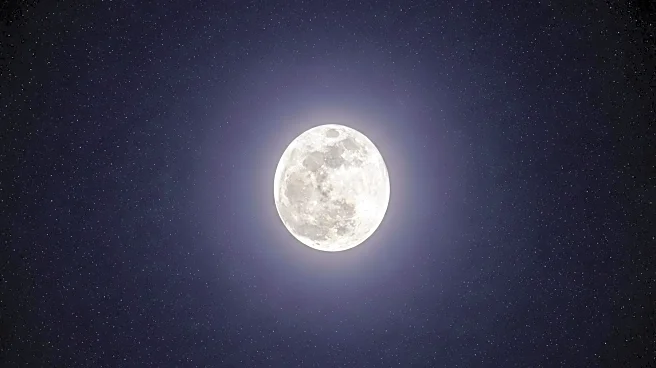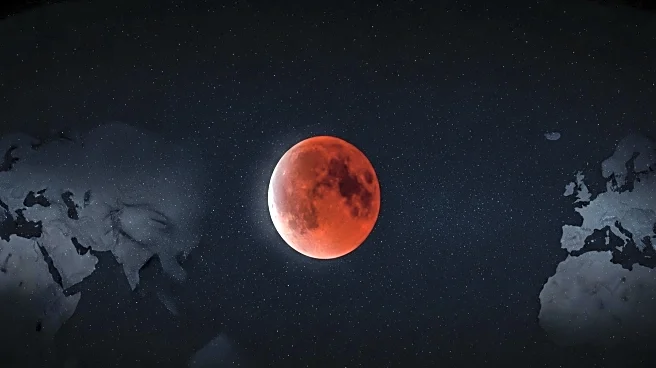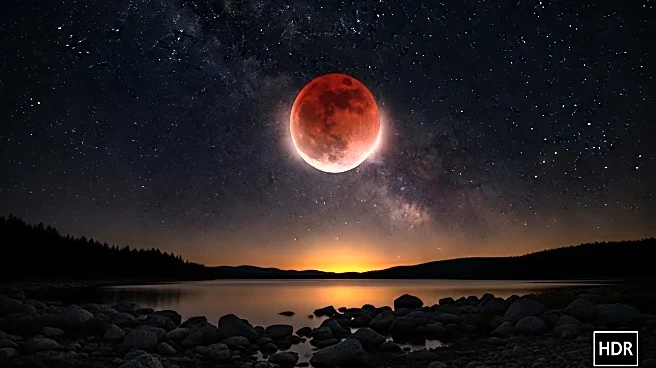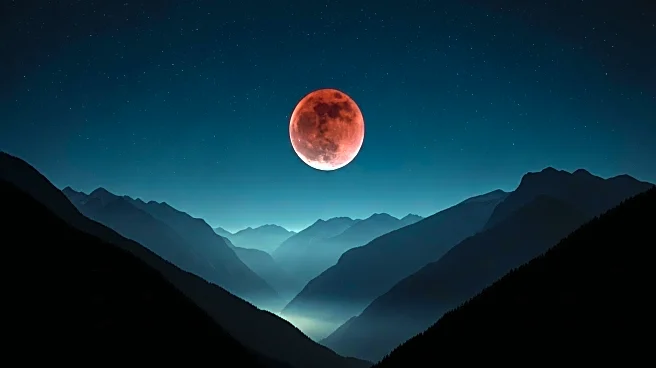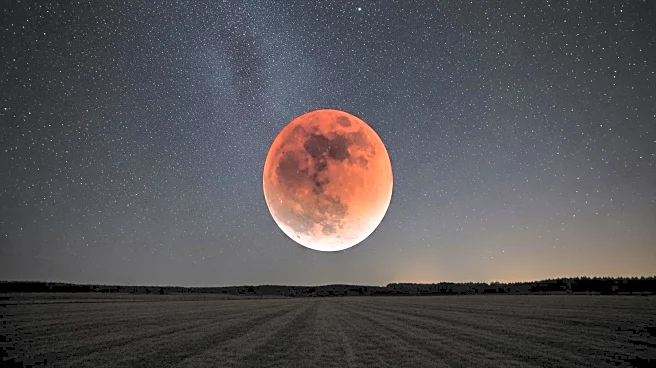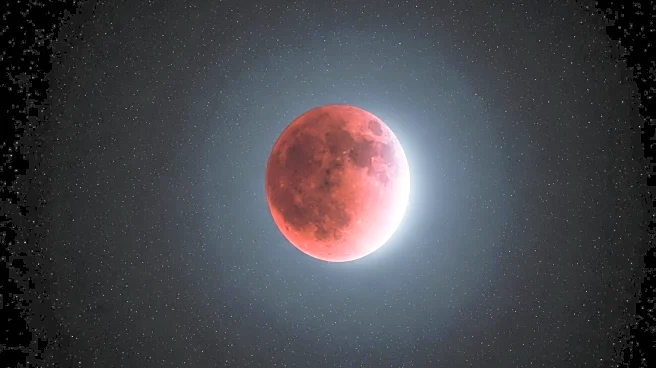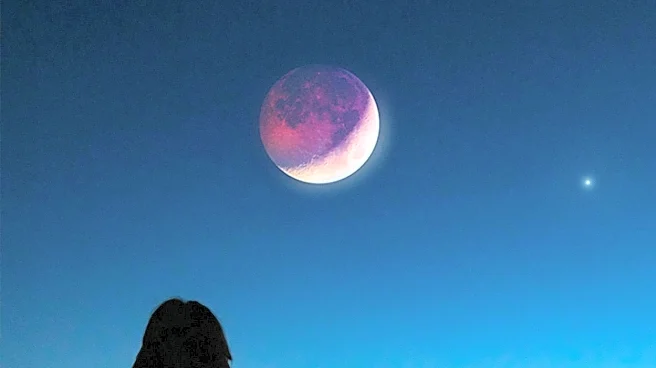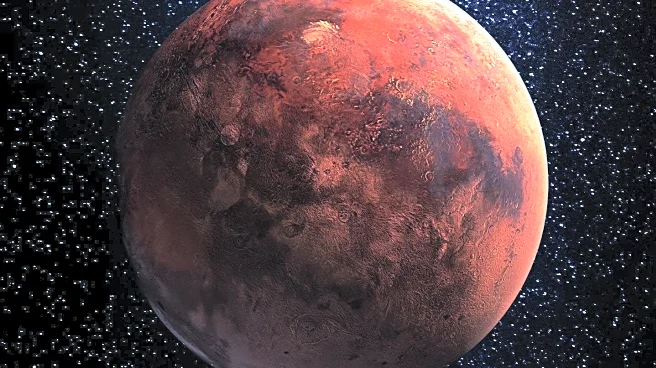What's Happening?
A total lunar eclipse, known as the Blood Moon, is set to occur on the night of September 7-8, 2025. This celestial event will be visible across multiple continents, including Asia, Australia, Africa, and Europe. During the eclipse, the Earth will pass between the Sun and the Moon, casting a shadow that gives the Moon a deep red hue. This phenomenon, known as Rayleigh scattering, occurs as sunlight filters through Earth's atmosphere, scattering shorter wavelengths and allowing longer red wavelengths to illuminate the Moon. The total phase of the eclipse will last approximately 82 minutes, making it one of the longest in recent years. The widespread visibility of this event offers a rare opportunity for billions of people to witness the spectacle.
Why It's Important?
The Blood Moon eclipse is significant due to its extensive visibility, allowing a large portion of the global population to experience the event. This natural phenomenon highlights the beauty of atmospheric science and provides an opportunity for educational engagement in astronomy. The event's long duration enhances its appeal, offering ample time for observation and photography. For many, it serves as a reminder of the intricate workings of celestial mechanics and the Earth's atmosphere. The eclipse also fosters a sense of global unity, as people across different regions share in the experience of observing the same natural wonder.
What's Next?
Skywatchers are encouraged to prepare for the event by finding locations with clear skies and minimal light pollution. Many online platforms will offer live streams of the eclipse, allowing those unable to view it in person to participate virtually. The next total lunar eclipse visible in the Americas is scheduled for March 3, 2026, providing another opportunity for enthusiasts in those regions.
Beyond the Headlines
The Blood Moon's striking appearance often inspires cultural and artistic interpretations, reflecting humanity's fascination with celestial events. While the eclipse is purely a scientific occurrence, its visual impact can influence cultural narratives and artistic expressions, showcasing the intersection of science and art.
